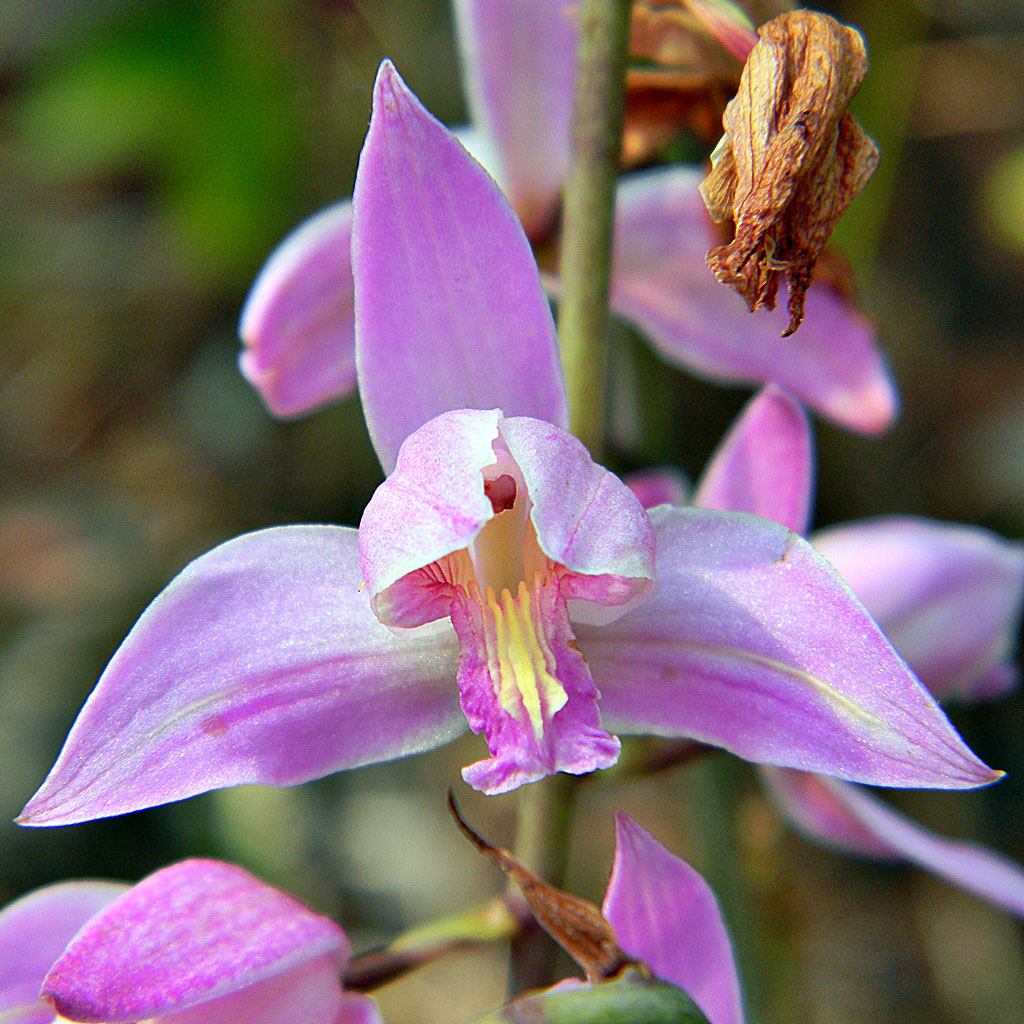Pine-pink
Pictured above: Pine-pink (Bletia purpurea) by Bob Peterson. Click on terms for botanical definitions. View post as a PDF
Pine-pink is a state-threatened terrestrial orchid found in swamps, marshes, pinelands and pine rocklands in southern Florida. Its striking pink flowers bloom in winter, spring and early summer. Pine-pink flowers are a food-deceptive species. They do not contain nectar, but may attract bees and other insects with their conspicuous floral display. However, like many orchid species, Pine-pink is self-pollinating, and some of its flowers are cleistogamous, meaning the bud self-pollinates and never fully opens.
Pine-pink flowers are born in terminal racemes and may be pink, rose, purplish or rarely white. Each flower is bilaterally symmetrical. The corolla is composed of three petals, one of which forms the labellum. This petal is three-lobed and has purplish midveins and a dark pink margin. Two of the lobes enwrap the stamens and ovary, which are fused into a single pinkish-white column. Extending outward beyond the petals are three pink sepals. Lateral sepals have white midveins and yellow margins. Flower spikes and leaves emerge from round pseudobulbs. Leaves are basal, linear to lanceolate and grasslike with parallel venation. They grow between 6 and 18 inches long and typically number 3 or 5. Stems are leafless and may be branched or unbranched. Fruits are green, cylindrical to ovoid capsules that bear many fine to powdery seeds.
The genus name Bletia is an homage to the 18th century Spanish botanist and pharmacist, Don Luis Blet. The species epithet purpurea is from the Latin purpureus, meaning “purple” or “dark red.”
Family: Orchidaceae (Orchid family)
Native range: Polk, Lee, Collier, Monroe, Miami-Dade, Broward, Palm Beach and Martin counties
To see where natural populations of Pine-pink have been vouchered, visit florida.plantatlas.usf.edu.
Hardiness: Zones 9B–11
Lifespan: Perennial
Soil: Moist to wet, well- or poorly drained organic, sandy or calcareous soils
Exposure: Full sun to minimal shade
Growth habit: 1–2’ tall, up to 5’ when flowering
Propagation: Seed, division
Garden tips: Pine-pink is suitable for moist naturalistic landscapes and wildflower gardens. It is easy to cultivate, particularly from seed, and is adaptable to a variety of conditions, provided it is kept moist. It prefers full sun but will tolerate some shade. The plant dies back in the fall.
Note: Pine-pink orchids may not be harvested or sold in Florida without a permit. They are occasionally available from nurseries that specialize in Florida native plants. Visit www.PlantRealFlorida.org to find a nursery in your area.

